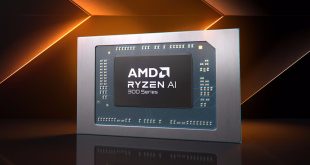Valve has been consistently working on improving its foothold in the virtual reality space over the last few years. High-end PC users are already covered, but over the last 12 months, much of Valve's focus has been placed on lowering the barrier of entry to use VR. That effort continues this week with the announcement of SteamVR Motion Smoothing.
With Motion Smoothing, Valve is opening the door for lower-end PCs to run high-fidelity VR games. Those who own a modern TV are likely already familiar with the concept. Many TVs nowadays use interpolation to add extra frames to an image, which increases frame rate but also adds a ton of latency, which is why it isn't recommended for gaming. Valve's take on motion smoothing works a bit differently. Essentially, when SteamVR notices that an application is beginning to drop frames, motion smoothing will analyse the last two delivered frames, estimate motion/animation and create a new frame. By synthesizing additional frames, a PC only needs to be able to render one out of every two frames, while still being able to have a smooth experience without judder.

So while your PC might not be powerful enough to hit a full 90 frames per second in VR, motion smoothing will pick up the slack. The system can scale even further if needed, delivering two synthesized frames for every one frame produced by the GPU, dramatically lowering the barrier to entry for VR gaming. This is also good news for those with high-end PCs, as it means that applications can be ran at an even higher resolution without the frame rate taking too much of a hit.
There are some unfortunate downsides though. This technology will only work on the HTC VIVE and the HTC VIVE Pro. This is due to the fact that the Oculus Rift and Windows Mixed Reality headsets have their own display drivers that use different techniques for maintaining frame rates. The other problem is that right now, motion smoothing can only be enabled through SteamVR on systems running Windows 10 and an Nvidia graphics card.
KitGuru Says: Motion smoothing seems like a great way to lower the barrier to entry for VR, although the current lack of AMD GPU support will be disappointing to some. Do any of you currently own a VR headset? Has performance been much of a concern for you?
 KitGuru KitGuru.net – Tech News | Hardware News | Hardware Reviews | IOS | Mobile | Gaming | Graphics Cards
KitGuru KitGuru.net – Tech News | Hardware News | Hardware Reviews | IOS | Mobile | Gaming | Graphics Cards


